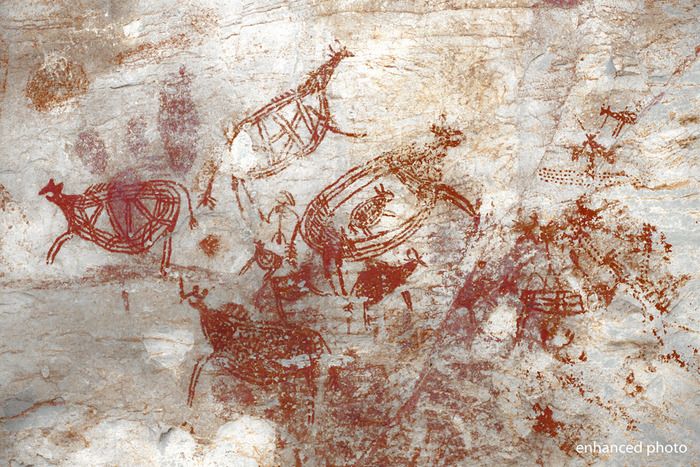A Closer Look at Tambun Rock Art – Part 1


Gua Tambun, a shelter that contains the earliest evidence of human occupation in Tambun, Ipoh dating back to as early as approximately 10,000 years ago, is one of the most fascinating rock art sites found thus far in Malaysia. Eleven panels of rock art with more than 600 motifs, Tambun Rock Art undoubtedly demonstrates the living testimony of the ancient man of Tambun.
A photo collection produced recently by Ipohite Sang Tan, an international photo journalist, has allowed us to re-animate the early lifeway of our far far ancestors – from man hunting in the deep jungle of old Tambun to the old landscapes of Gua Tambun – all these paintings carry the hidden and forgotten living stories of prehistoric Malaysia.
Of eleven panels of rock art found in Gua Tambun, many depicted typical hunter-gatherers’ ways of life and some, probably, are closely associated with the early spiritual beliefs of the ancient Tambun man.
The rock art of Tambun were produced in at least three different styles namely, X-ray style, solid silhouette, and stippled drawing. X-ray style drawing refers to those drawings comprising of only the skeletal frame and internal organs of animals; silhouette drawing refers to depictions in a single hue or tone/shade; whereas stippled drawing is in the form of motifs/patterns which simulate different degrees of solidity or shades formed by small dots.


At Gua Tambun the most distinctive X-ray style-painting panel, in particular, depicting a wildlife scene with a few “deer” or some refer them as “buffaloes” were wandering around, (presumably) in the jungle of old Tambun. These dark-red X-ray style paintings outline the skeletal frame of these animals and among all, there is one depicting a “pregnant deer” carrying a fawn inside the belly.
Not far to the right of this X-ray panel are some discernible stippled drawings – few lines formed by small dots probably showing human or animal walking tracks.
Solid silhouette drawings, on the other hand, are predominant in Gua Tambun, in which many depictions of animals were drawn in a single hue of shade – whether in red, purple or orange. A very typical example of the solid silhouette drawings is the panel that comprises human figures and a variety of botanical shapes and another panel with various types of ocean creatures.


Sounds interesting? Why don’t you come and join us for a closer look at Tambun Rock Art? At present, we offer community heritage workshops at no cost to the public and the programme includes a guided rock-art trail to Gua Tambun with other hands-on activities.
Readers can follow us on Facebook for more updates (Gua Tambun Heritage Awareness Project) or drop us a message at tambunrockart@gmail.com.
Hsiao-Mei Goh


